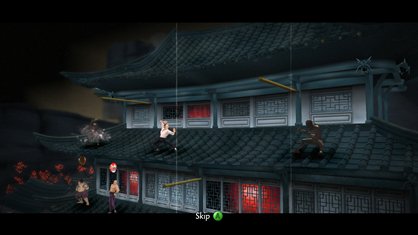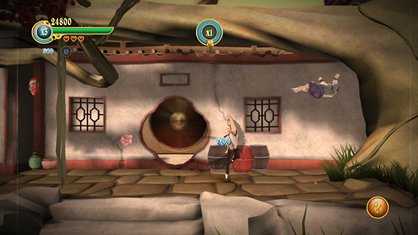Why 3D is the new HD
We've gone eyes-on with the new generation of 3D gaming. Here's why it IS the future
Yeah, that’s what we used to think too. But not any more.

Above:Impressive cosplay, but not the 3D gaming we're talking about
After a lengthy play withdeveloper Blitz Games Studios’upcoming 3D tech in Invincible Tiger: The Legend of Han Tao, scheduled by publisher Namco Bandai for release this September, our doubts have dissipated. 3D isn’t going to revolutionise gaming overnight, but even at this early stage we can see very definite parallels between it and the beginnings of a certain other display technology ending in “D”. The comparisons to the early days of high-def are obvious, and we think 3D’s future will only compound them. Here’s why.
It makes games better - Fact
It’s easy to be cynical when the man developing the new technology tells you that you haven’t experienced real 3D media before. It’s easy to be nonplussed when he mocks the red-and-blue paper specs of old before presenting you with a chunky pair of plastic sunglasses in replacement. But the fact is that the claims are true. This new 3D just makes games a hell of a lot cooler, to an order of magnitude which will force you to sit back and out-“Woah” Keanu Reeves even at his most bamboozled.

Above: We tried to do a clever Photoshop turning this screen into a 3D model. We failed hard.
Blitz’s tech isn’t the blurry, flat parallax layers of old. It’s a sharp, solid and real-feeling experience; as much like remotely manipulating a 3D diorama as playing a game. The example we played was Invincible Tiger, Blitz’s upcoming 2.5D kung fu side-scroller, but even without a multi-directional world to explore the improvement over a ‘flat’ display was immense. Little men fought in the middle of the screen, the ground they stood on stretched right up to the background scenery, and every building, bridge, rock and tree root fell into multi-directional relief exactly as it should.
And best of all, it never felt gimmicky. Blitz has very stringent rules on how to use this stuff properly, and those rules come from the perspectives of both logistics and taste. Most importantly, the depth of field went into the screen, not out of it, turning the TV into a kind of window frame overlooking the game’s staging area. No cheesy pop-up zombies here.
Sign up to the GamesRadar+ Newsletter
Weekly digests, tales from the communities you love, and more

Above: The depth of field in scenes like this really does make it feel real. Just squint and try to imagine it.
That approach solved the problem of viewers' brains melting down when watching out-of-screen 3D images reach the edge of the viewing area (not a problem in cinemas, but a nightmare at home where viewing angles can vary). But it also made sure that the experience was all about in-game immersion rather than cheap tricks. The only extravagant effect was a smile-inducing out-of-screen throw, which saw enemies’ flailing bodies sail a foot or so out of the TV from time to time. Even the ship we watched sail a few hundred in-game metres from the horizon to the foreground was much more about adding texture and a sense of reality scale to the game world than simply saying “Look what we can do”.



